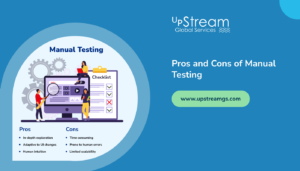Table of Contents
Common Reasons For Software Testing Failures
- Inadequate Requirements Gathering
- Poorly Defined Test Objectives
- Insufficient Test Planning and Strategy
- Ineffective Test Case Design
- Unrealistic Time Frames and Resource Constraints
- Communication and Collaboration Issues
- Insufficient Test Environment Management
- Limited Test Data Management
Preventing Software Testing Failures
- Establish Clear Requirements and Objectives
- Develop Robust Test Plans and Strategies
- Design Effective Test Cases
- Allocate Adequate Time and Resources
- Foster Communication and Collaboration
- Manage Test Environments and Data Effectively
Software testing is a crucial phase in the software development lifecycle to identify defects, errors, and vulnerabilities before deployment. However, software failures still occur despite rigorous testing efforts, leading to costly setbacks and compromised user experiences.
In this blog, we’ll delve into the root causes of software testing failures, exploring the common pitfalls, challenges, and strategies for preventing them so that the software is error-free before deployment.
3. Insufficient Test Planning and Strategy
Inadequate test planning and strategy can undermine testing efforts, leading to inefficient allocation of resources and ineffective test execution. Testing without a well-defined plan increases the risk of overlooking key areas and failing to identify critical defects.
4. Ineffective Test Case Design
Test cases that are poorly designed or lack sufficient coverage can result in missed defects and false positives. Inadequate consideration of boundary conditions, edge cases, and error-handling scenarios may lead to insufficient test coverage and undetected vulnerabilities.
5. Unrealistic Time Frames and Resource Constraints
Pressure to meet aggressive deadlines or limited resources can compromise the quality and thoroughness of testing efforts. Rushed testing may result in incomplete test execution, shallow analysis of results, and an increased likelihood of overlooking critical defects.
7. Insufficient Test Environment Management
Inadequate management of test environments, including configuration, availability, and consistency, can disrupt testing activities and compromise test results. Testing in an unstable or inconsistent environment may lead to unreliable outcomes and false positives.
Conclusion
Software testing failures can have far-reaching implications, including financial losses, reputational damage, and compromised user experiences. By understanding the root causes of testing failures and implementing effective prevention strategies, organizations can mitigate risks, enhance software quality, and deliver successful software solutions that meet the evolving needs of users and stakeholders.







